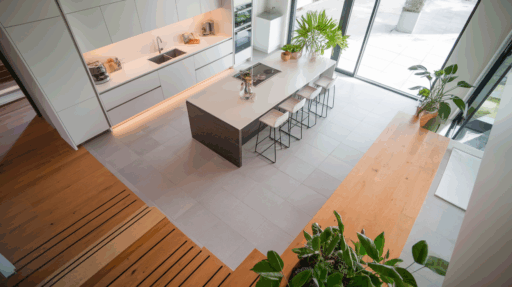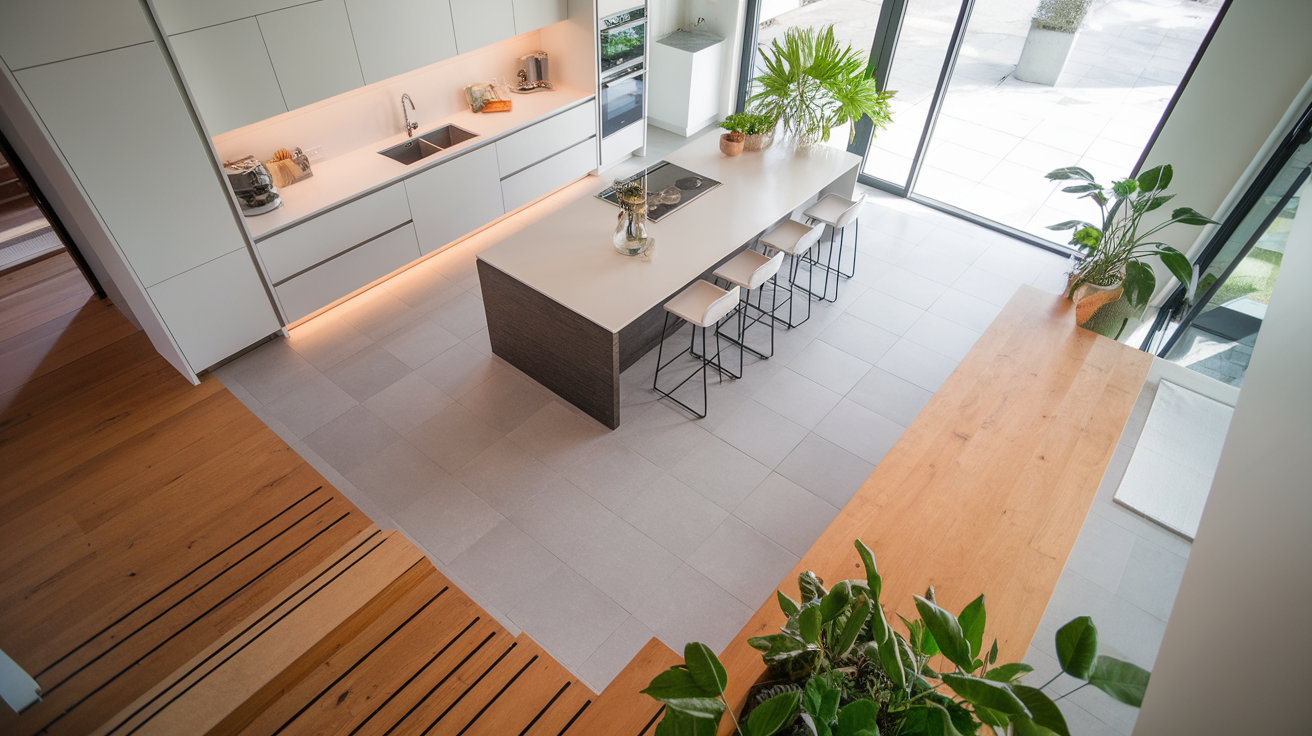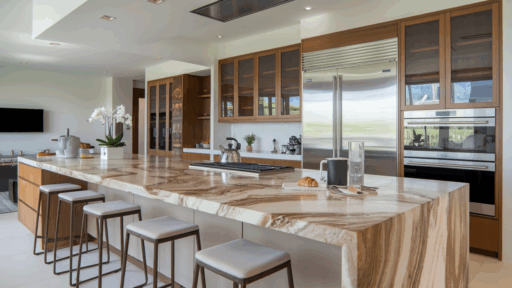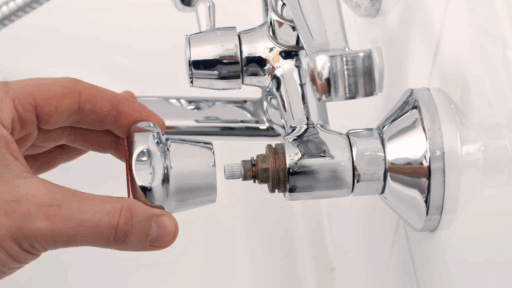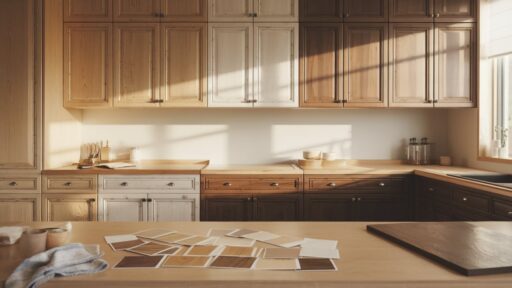When choosing flooring for your kitchen, it’s important to strike a balance between style, durability, comfort, and maintenance.
The kitchen is one of the most used spaces in your home; it’s where you cook, gather, and often start and end your day.
I know how overwhelming it feels to pick a floor that fits your daily routine and still looks amazing.
You want something tough but beautiful, easy to clean but not too cold underfoot.
That’s why I’ve put together this guide to help you pick the right kitchen flooring based on your lifestyle, taste, and long-term needs.
Why Kitchen Flooring Matters?
Your kitchen floor takes a beating every day, between spills, heat, and constant foot traffic, it needs to be tough. But strength alone isn’t enough.
You also want something that’s safe, easy to clean, and looks great with your cabinets and decor.
I’ve seen kitchens where the wrong flooring didn’t just wear out fast, it threw off the whole vibe.
The right floor sets the tone, makes cleaning easier, and keeps up with your busiest days.
With all the options out there, knowing what really matters helps you make a smart, lasting choice that holds up beautifully
Top Kitchen Flooring Materials
There are many kitchen flooring materials out there, but each one has its pros and cons. Below, I’ll break down the most popular options and what makes each one stand out.
1. Hardwood Flooring
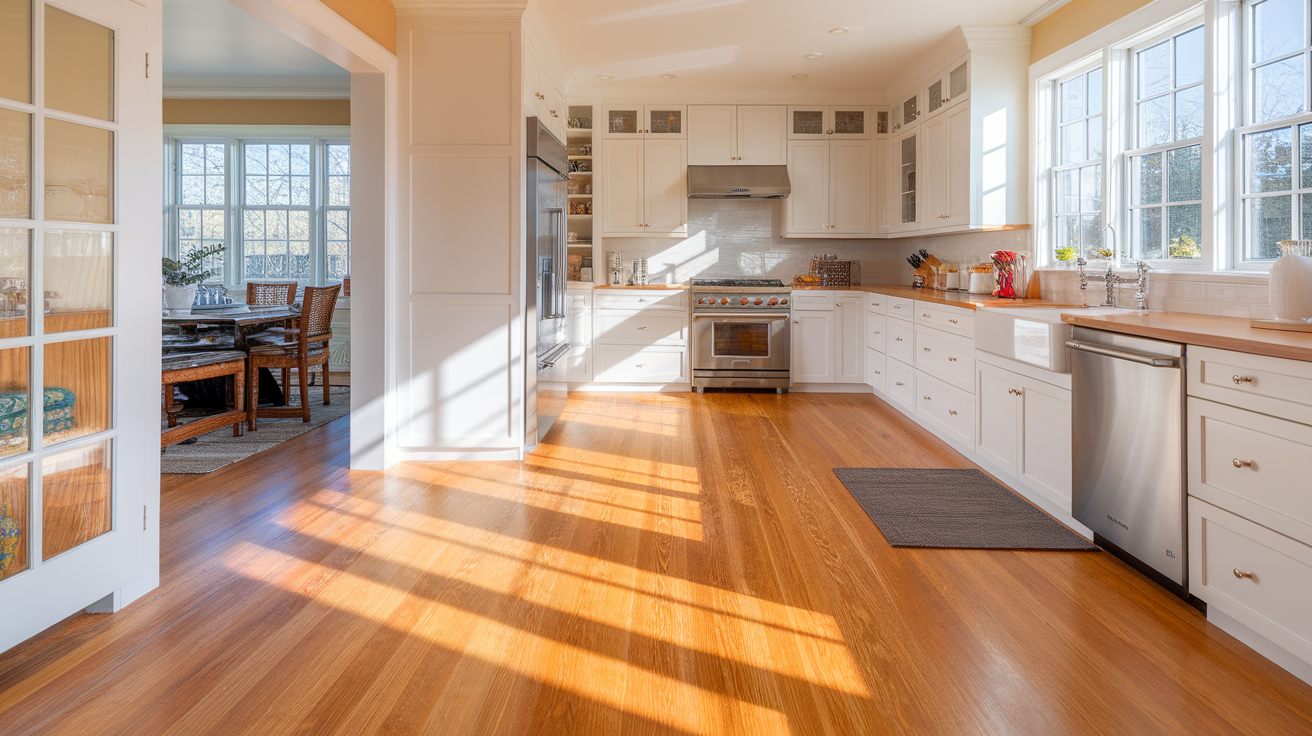
Hardwood brings warmth and timeless style to any kitchen. It flows beautifully into adjacent spaces and boosts home value.
Thanks to modern sealants, it’s more resistant to moisture and stains than older wood floors.
While not waterproof, it holds up well in low-spill areas and adds a cozy, natural touch that never goes out of style.
2. Laminate Flooring
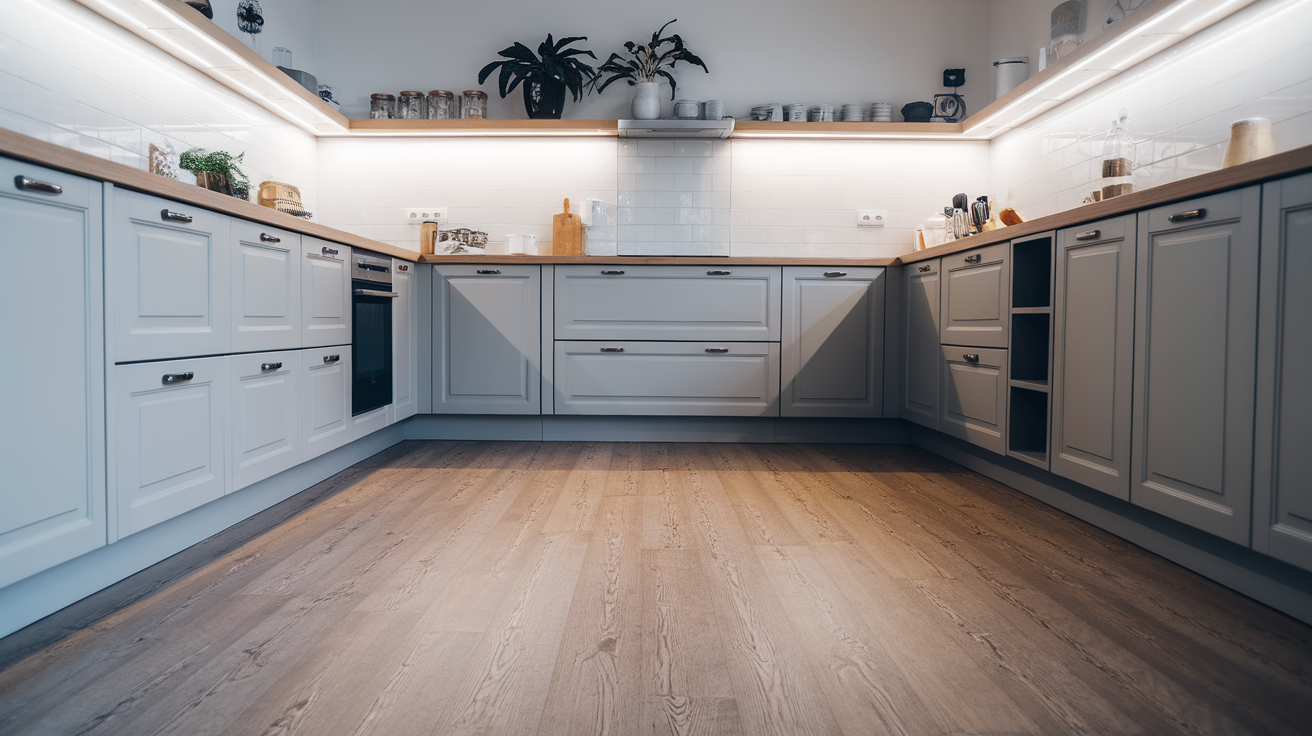
Laminate offers the upscale look of hardwood or stone at a lower cost.
It’s a practical choice for busy kitchens, resisting scratches, dents, and everyday wear and tear. It’s also quick to install and easy to clean.
While it’s not as water-resistant as vinyl, many modern options include waterproof features that make it suitable for most kitchens.
3. Vinyl Flooring
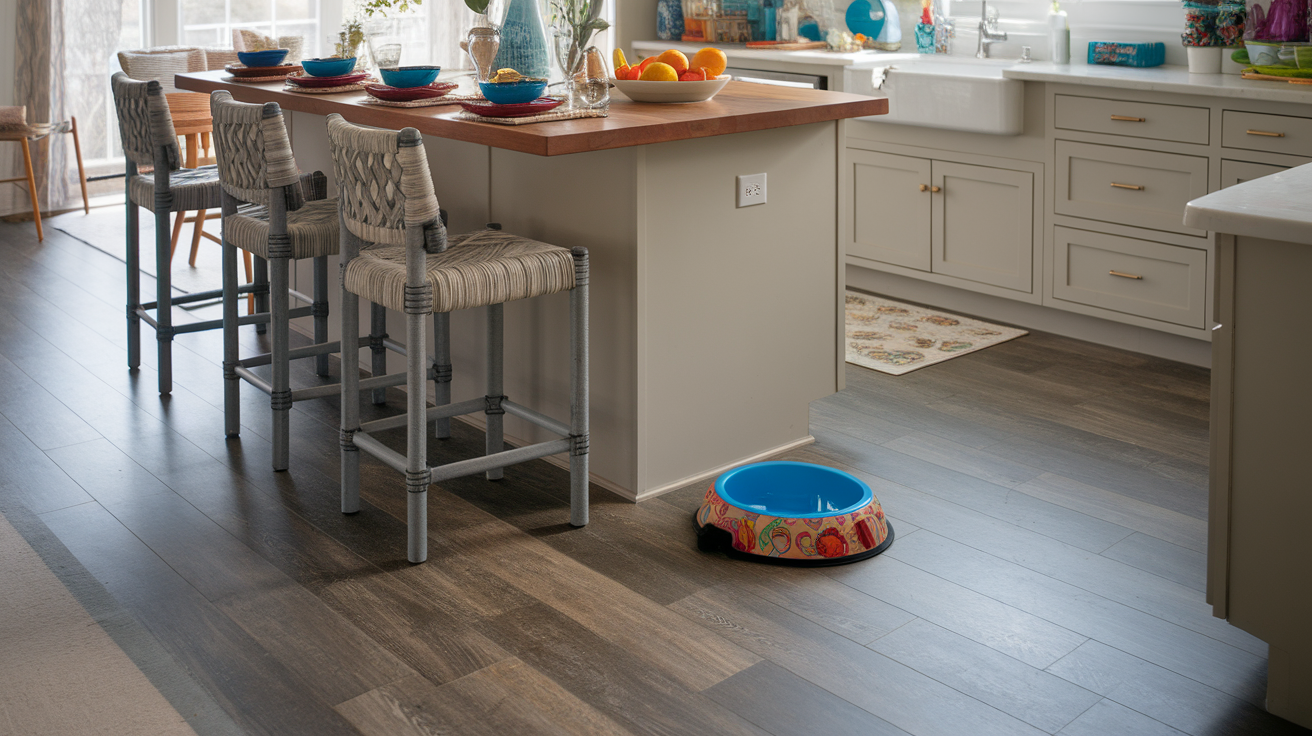
Vinyl is one of the most adaptable kitchen flooring choices out there.
Waterproof, cushioned underfoot, and available in countless styles, it suits everything from farmhouse to modern spaces.
Luxury vinyl planks mimic wood and stone so well that most people can’t tell the difference.
It’s affordable, DIY-friendly, and stands up well to splashes and spills.
4. Tile Flooring
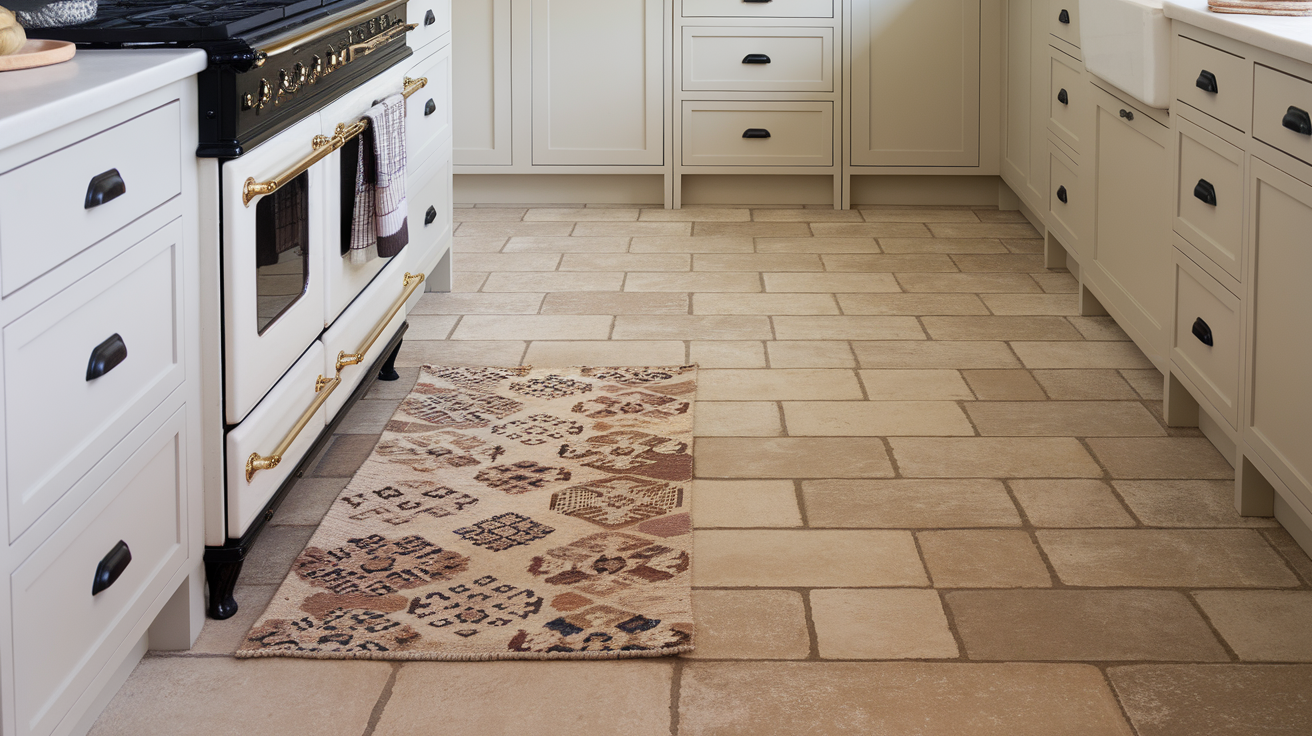
Tile is a go-to for kitchen durability. Both ceramic and porcelain tiles resist heat, scratches, and moisture, making them ideal for busy households.
With endless colors and patterns, tile lets you personalize your kitchen easily.
Just be mindful of grout lines, which need occasional cleaning and sealing, and the hard surface, which can be tiring if you stand for long periods.
5. Engineered Wood Flooring
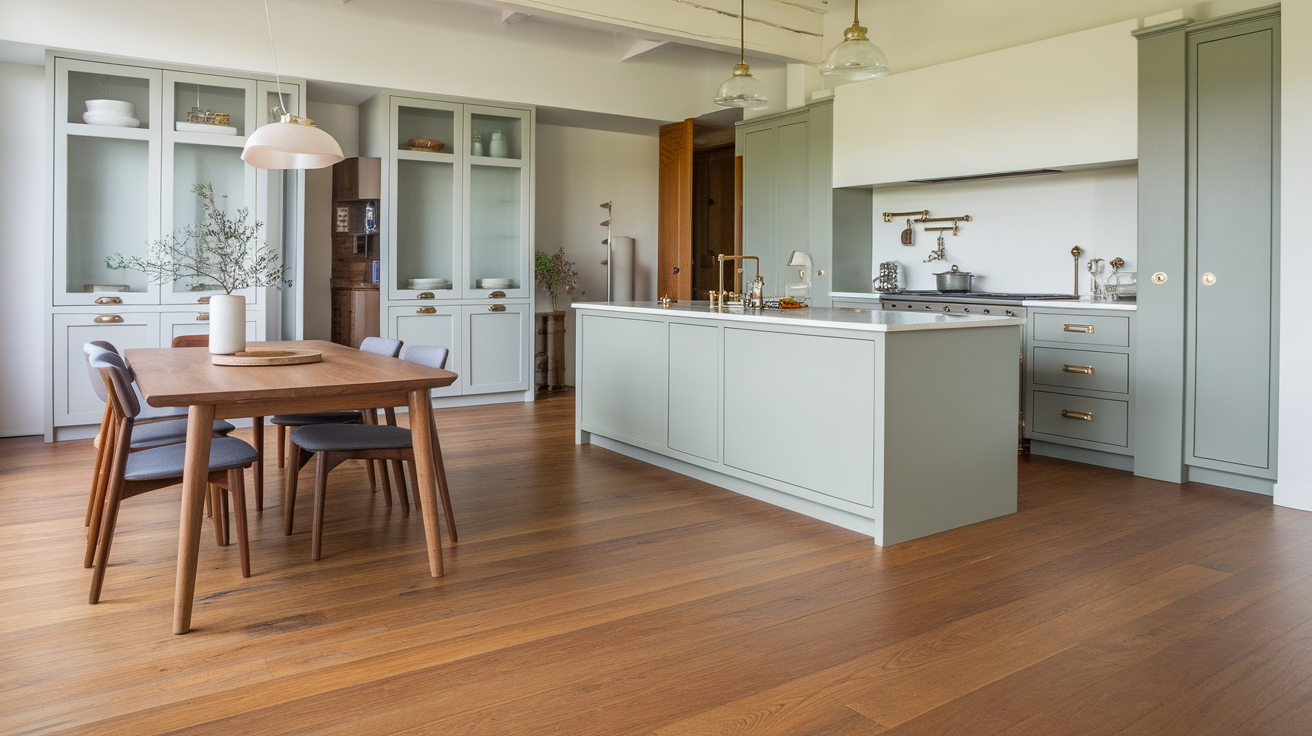
Engineered wood looks like hardwood but performs better in moisture-prone kitchens. Built with a real wood top layer and a stable plywood base, it resists warping and expansion.
It’s easier to install than solid hardwood and works well in open-concept homes.
If you want warmth with better protection, engineered wood is a solid choice.
6. Natural Stone Flooring
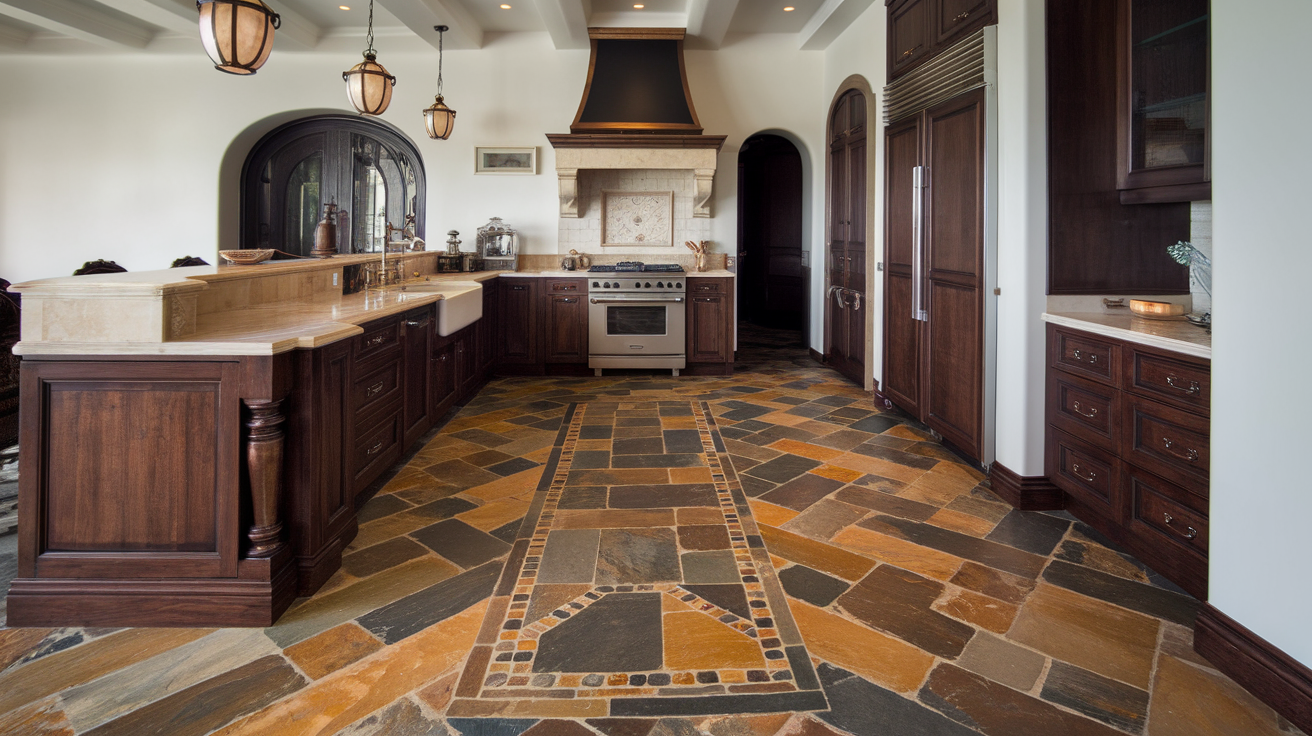
Natural stone like slate, marble, or travertine delivers unmatched beauty and durability. It’s heat-resistant, long-lasting, and instantly elevates a kitchen’s look.
However, it requires regular sealing and maintenance to stay in top shape.
The surface can feel cold and hard, so area rugs or mats may help make it more comfortable underfoot.
7. Cork Flooring
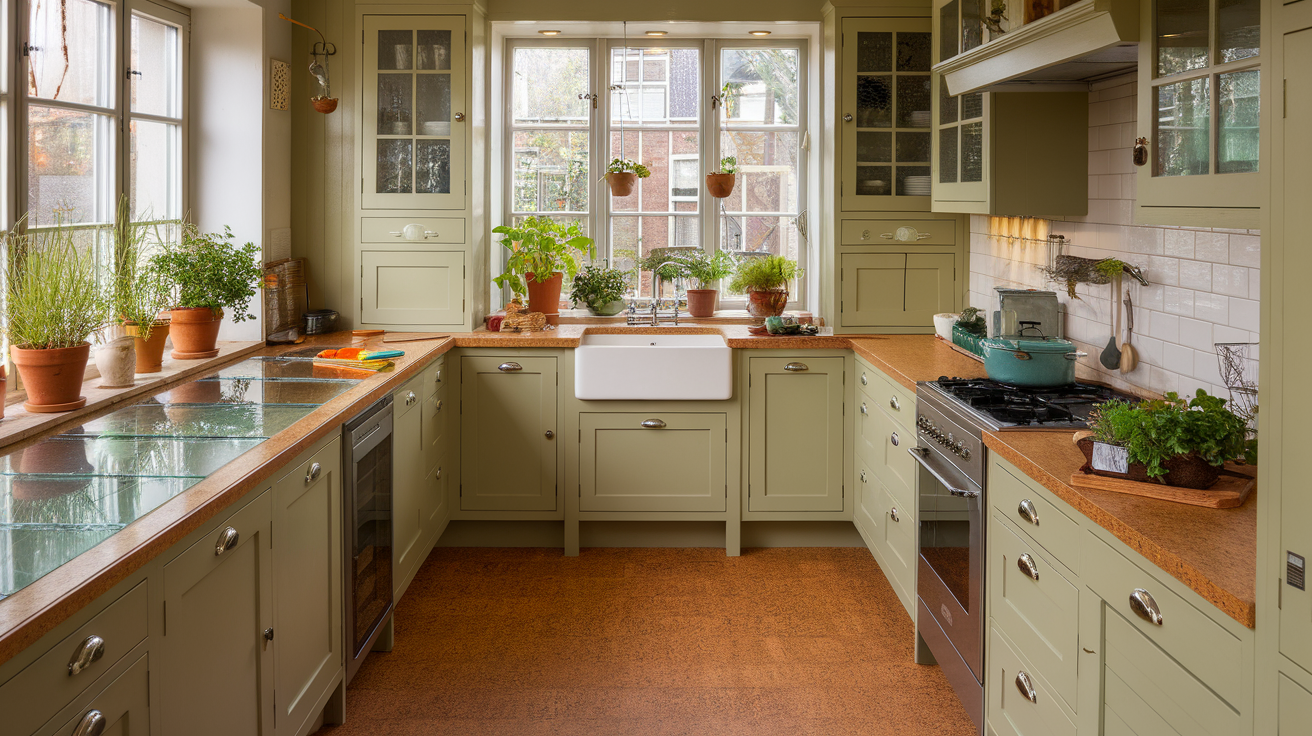
Cork is soft, quiet, and kind to your joints, which makes it perfect if you spend long hours standing in the kitchen.
It’s also naturally antimicrobial and resistant to mold and mildew.
Sealing cork helps prevent water damage and staining. It offers a unique, textured look and is a smart pick for eco-conscious homeowners.
Factors to Consider When Choosing Kitchen Flooring
Before you make a final choice, there are a few key things to think about. I always recommend narrowing your options based on your daily habits and kitchen usage.
- Durability: You want a floor that stands up to daily wear. Think about how often you cook, how many people walk through the kitchen, and if you have pets. Materials like tile and vinyl are extremely durable.
- Maintenance Needs: If cleaning isn’t your favorite chore, choose a floor that requires minimal upkeep. Vinyl and laminate are simple to clean, while natural stone and tile may need sealing and grout care.
- Comfort and Warmth: Harder materials like stone or ceramic can be tough on your feet. If you spend long hours in the kitchen, consider cork, vinyl, or placing rugs in work areas to add comfort.
- Water and Heat Resistance: Water resistance is key in kitchens. While hardwood is beautiful, it’s more sensitive to moisture. Vinyl, tile, and engineered wood handle spills and humidity better.
- Aesthetic Appeal: You want flooring that complements your cabinets, countertops, and overall style. Think about colors, finishes, and textures. A rustic wood can make your kitchen cozy, while glossy tiles bring a modern vibe.
- Budget: Your budget helps narrow your choices quickly. Laminate and vinyl offer great value for less, while hardwood and stone come with higher price tags but may offer better long-term value.
Best Kitchen Flooring by Lifestyle
There’s no one-size-fits-all answer, so here’s what I suggest based on different kitchen needs and preferences:
- Best for Families: Vinyl flooring is kid- and pet-friendly, easy to clean, and soft enough to cushion little feet and fallen toys. It’s a practical and stylish option when you need function first.
- Best for Modern Kitchens: Large-format porcelain tiles or luxury vinyl planks work beautifully in sleek, modern kitchens. They offer clean lines and a high-end look without demanding high maintenance.
- Best for Traditional Homes: Hardwood or engineered wood fits right into classic or farmhouse-style kitchens. It brings warmth and character while still performing well with proper care.
- Best on a Budget: If you’re trying to keep costs low, go with laminate or standard sheet vinyl. These materials offer a stylish look at an affordable price and often come in DIY-friendly formats.
Pros and Cons of Different Flooring Types
To help summarize everything, here’s a quick overview:
| Flooring Type | Pros | Cons |
|---|---|---|
| Hardwood | Classic, adds value, warm | Sensitive to moisture, higher cost |
| Laminate | Affordable, easy to install | Not waterproof, can’t refinish |
| Vinyl | Water-resistant, soft, versatile | Can dent or fade over time |
| Tile | Durable, waterproof, endless designs | Hard underfoot, grout maintenance |
| Engineered Wood | Wood looks with moisture resistance | Still not fully waterproof |
| Stone | Elegant, long-lasting | Expensive, needs sealing |
| Cork | Soft, eco-friendly, mold-resistant | Requires sealing, less common |
Tips for Installation and Longevity
Once you pick your flooring, proper installation and care make a big difference. Let me share a few tips:
- Use underlayment for laminate and vinyl to reduce noise and add cushion.
- Seal natural stone and cork regularly to protect against spills.
- Install floor mats near sinks and stoves to catch spills and reduce foot fatigue.
- Clean up water immediately to prevent damage, even on water-resistant surfaces.
Conclusion
Choosing the best kitchen floor means finding the right mix of style, practicality, and comfort.
Your kitchen sees spills, heavy foot traffic, and lots of activity, so the floor you choose needs to keep up.
From low-maintenance vinyl to timeless hardwood, there’s something for every taste and budget.
Think about how you use your kitchen daily, cooking, entertaining, and family meals, and choose a floor that supports your lifestyle.
Durability, ease of cleaning, and how it feels underfoot all matter.
I hope this guide helps you feel confident about your choice and excited to create a space that’s both beautiful and functional.

